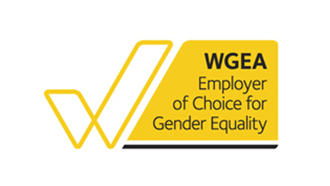- within Media, Telecoms, IT, Entertainment, International Law and Energy and Natural Resources topic(s)
- with Finance and Tax Executives and Inhouse Counsel
- in Australia
- with readers working within the Environment & Waste Management and Law Firm industries
As global demand for critical minerals intensifies, businesses - particularly in the extractives sector - increasingly find themselves drawn to strategic deposits in emerging markets and, at times, in conflict-affected and high-risk areas (CAHRAs).
With institutional investors, customers and regulators demanding robust environmental, social and governance (ESG) standards across the value chain, companies that can uphold strong ESG practices while operating in higher-risk jurisdictions will be well-positioned to gain an edge in a resource-competitive world.
The numbers are persuasive. The Democratic Republic of Congo controls roughly 70% of global cobalt reserves, while the Lithium Triangle - spanning Bolivia, Argentina and Chile - supplies over 75% of the world's lithium. Australian companies alone invested $60 billion across 234 African mining projects in 2023, becoming the largest private investors in countries like Burkina Faso and Mali. With regional mineral reserves valued at $17 trillion, the scale of opportunity is clear.
The geographic concentration of the world's critical mineral reserves means that companies seeking to secure supply chains for expanding markets in clean energy technologies, electronics and other critical applications are considering opportunities in higher-risk jurisdictions. However, the operational reality presents complex ESG challenges that require sophisticated risk management frameworks and heightened due diligence protocols.
Community impact and human rights risks
While companies operating in CAHRAs face a range of risks - including political, operational, security, regulatory, governance and sovereign exposures -community impact risks stand out as especially critical in these circumstances. Effectively managing these, often through the use of an operational-level grievance mechanism, is essential to securing and maintaining a social licence to operate.
Emerging markets and CAHRAs typically feature a weak rule of law, limited government capacity to protect civilian populations, and heightened vulnerability among local communities. Companies operating in these environments face elevated risks of contributing to or being complicit in negative social and human rights impacts, and local communities often have a range of concerns, including in relation to:
- Environment and health: concerns about water
contamination, air pollution, noise, dust and long-term
environmental degradation are often amplified in emerging markets
where environmental regulations may be weaker or enforcement
inconsistent.
- Traffic and transportation: concerns about
heavy truck traffic, road damage and safety from increased
industrial vehicle movement through residential areas.
- Cultural heritage destruction: damage to
sacred sites, cultural landmarks or traditional practices can
trigger severe community backlash and legal challenges,
particularly where cultural heritage protection laws exist.
- Displacement and resettlement: forced
relocation of communities, inadequate compensation for land and
assets, and poor resettlement planning create lasting grievances
and potential for ongoing conflict.
- Indigenous rights and land disputes: conflicts
over traditional land rights are particularly acute in emerging
markets where formal land tenure systems may be weak. Indigenous
communities often have ancestral claims to mineral-rich areas, and
failure to properly engage or obtain consent can result in legal
challenges, protests and operational disruptions. In some cases,
Indigenous peoples are not recognised by the state which increases
operational challenges.
- Inequitable benefit distribution: perceived
unfair sharing of mining revenues and benefits creates resentment.
Communities may feel that foreign companies extract wealth while
leaving behind environmental damage and minimal local economic
development.
- Local employment and procurement disputes:
failure to hire locally or use local suppliers as promised, or
bringing in foreign workers for positions communities believe they
could fill, can generate significant tension.
- Community disruption: an influx of capital, workers and activity can disrupt local communities and increase the risk of gender-based discrimination and violence.
Unresolved complaints can present significant challenges to a company's social licence to operate by eroding community trust and acceptance. This erosion typically manifests as community opposition to project development and operations, potentially resulting in project delays and operational shutdowns. Some unresolved complaints have ultimately led to project abandonment and/or major international litigation.
Key components of an effective operational level grievance mechanism
Many of the challenges outlined above can be identified and mitigated through fulsome community consultation, leading to the establishment of effective operational level grievance mechanisms (OLGM). Too often, however, OLGMs are designed with minimal community engagement, a narrow understanding of stakeholder impacts including, for example gender-based impacts, and a focus on operational efficiency as opposed to overall effectiveness - resulting in flawed systems that fail at their core purpose: identifying and mitigating risk.
Information required for the design of an effective OLGM can be drawn from pre-entry due diligence and planning that includes community and social research. However, it is necessary to invest in strongprincipled, gender-sensitive and thoughtful community consultation and co-design to establish trust and engagement with the process. Consultations must take into consideration andaccommodate language barriers, cultural and gender norms, as well as ensuring adequate time is allocated for meaningful engagement. Understanding the local context and identifying how any development is likely to impact on the community (and different individuals within that community) from an environmental, social and human rights perspective is critical to success.
Other key elements of OLGM design include:
- considering how information about the OLGM will be communicated
to community members, and how to reach diverse groups who may not
have access to traditional forms of communication;
- designing inclusive access points and channels which address
the diverse needs of individuals (such as women, people with low
literacy, and those with disabilities), while prioritising safety
and accessibility;
- implementing intake and enquiry processesthat allow for
appropriate acknowledgement, registration, assessment, referral and
investigation, ensuring access is simple, clear, user-friendly and
culturally safe;
- including safeguard and protection measures, particularly for
complaints relating to violence, sexual violence, or gender-based
violence;
- incorporating appropriate response, resolution or escalation
procedures;and
- building in finalisation, review, and performance indicators to ensure the mechanism continues to be relevant and meets the needs of the community and the business.
Investing time and effort at the design stage of an OLGM can help to mitigate misunderstandings about project impacts, benefits and timelines, and contribute to a strong grievance mechanism that in turn acts as a warning system for identifying risks and threats to a company's social licence to operate. It can also prevent concerns from growing into major disputes which may lead to costly litigation or substantial settlements.
Key strategic recommendations for companies operating in CAHRAs
Operating successfully in CAHRAs requires a fundamental shift in how companies' approach ESG risk and management. Traditional risk frameworks developed for stable operating environments must be strengthened with specialised capabilities, enhanced due diligence, and robust governance structures. Operational level grievance mechanisms are particularly important,not only as early warning systems but also for managing social licence risks.
Companies that invest in comprehensive ESG risk management systems as part of a broader risk management framework will gain a competitive edge by enhancing their ability to successfully develop projects in challenging jurisdictions. Those that fail to adapt risk missing the opportunity to identify and manage potential environmental and human rights impacts before they escalate, exposing themselves to increasing legal, financial and reputational risks. This may ultimately threaten their social license to operate. Ultimately, the cost of proactive and engaged preparation is invariably lower than the cost of reactive failure - both financially, reputationally and critically, in avoiding human and environmental impacts.
The content of this article is intended to provide a general guide to the subject matter. Specialist advice should be sought about your specific circumstances.
 |
 |
| Lawyers Weekly Law firm of the year
2021 |
Employer of Choice for Gender Equality
(WGEA) |




